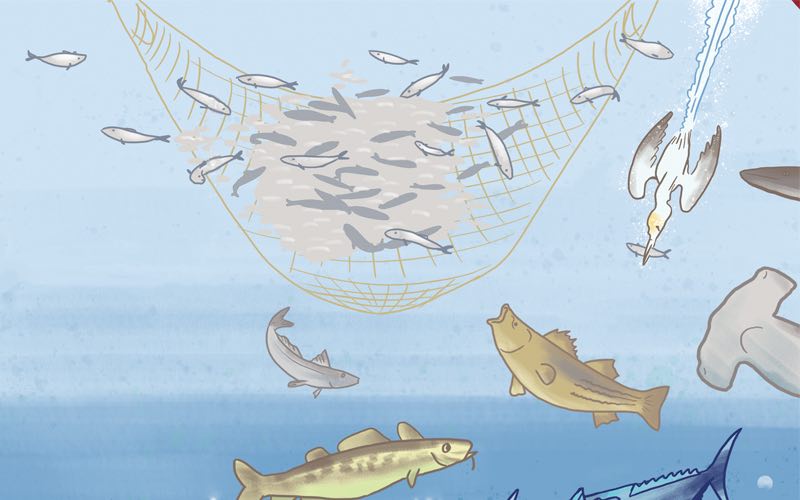
Atlantic herring support the marine ecosystem as food for large fish, whales, seabirds, and more. Current catch limits for herring don't take its crucial role in the ecosystem into account. Illustration: Josh Kramer
September 25, 2018 (BOSTON) – Conservation Law Foundation (CLF) released the following statement today in response to an amendment passed by the New England Fishery Management Council that will improve how Atlantic herring are managed. Amendment 8 will set catch limits for herring that account for its role as prey for larger fish, whales, seabirds, and other species. It also pushes the largest fishing boats offshore with a 12-mile, year-round buffer to prevent catching too many herring in too little time too close to shore.
“The council is taking a bold step in choosing to manage herring differently, and it should be commended,” said Erica Fuller, Senior Attorney at CLF. “After years of requests from scientists, recreational fishermen and the public, this amendment recognizes the critical role this species plays in our ocean ecosystem. These rules will make a long-lasting difference for herring, its predators, and the businesses and communities that depend upon a healthy fishery and a healthy ocean.”
While the amendment will improve management, CLF advocated for more comprehensive ecosystem-based management including a more restrictive control rule and a 50-mile buffer. Unfortunately, the herring population recently collapsed and tradeoffs were required in order to avoid further harm to the herring fleet. For more details read CLF’s blog, Ensuring a Future for Atlantic Herring.
CLF experts are available for further comment.
###
